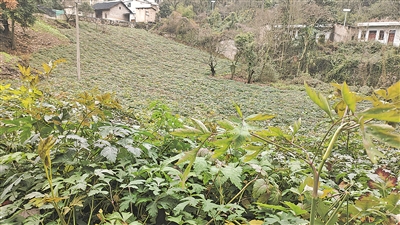Medicinal herb planting vitalizes Guiyang's rural areas

The Peucedanum praeruptorum planting area in Anliu has employed locals. [Photo/Guiyang Daily]
Wudang district, a hub for traditional Chinese medicine and ethnic medicine industries in Southwest China's Guizhou province, is home to over 10 large-scale pharmaceutical manufacturers, forming a significant industrial cluster. In a push for diversified development, cultivating Chinese medicinal herbs has become a vital component of Guiyang's health and pharmaceutical industry.
In Anliu town, the Peucedanum praeruptorum (a traditional Chinese herb) planting base is bustling with activity. This herb is valued for its ability to dispel wind-heat, clear toxins and phlegm, and relieve coughs, boasting broad market prospects.
By 2024, Anliu town has expanded its cultivation of Peucedanum praeruptorum to 300 mu (20 hectares), creating jobs for 50 residents.
In Gaofeng village, the Poria cocos (a medicinal fungus) planting base has seen consecutive bumper harvests. The large, high-quality fungus, which emits a subtle fragrance, has become a hot market commodity. It is known for its diuretic, spleen-strengthening, and calming properties.
In 2024, Gaofeng partnered with a cooperative team: the village collective enterprise manages land transfer and labor organization, while the team provides cultivation technology and market access, jointly establishing a Poria cocos pilot base.
The village has converted 43 mu of forests and 26 mu of farmland for Poria cocos cultivation. Each season yields three harvests, with an estimated output of 3 metric tons per mu and an annual value exceeding 20,000 yuan ($2,735) per mu.
Presented by China Daily.
黔ICP备05001922号-3
